 Taking Seizure Precautions | Epilepsy Foundation
Taking Seizure Precautions | Epilepsy FoundationWarning: The NCBI website requires JavaScript to operate. NCBI Bookshelf. Service of the National Library of Medicine, National Institutes of Health. StatPearls [Internet]. Treasure Island (FL): StatPearls Publishing; 2021 Jan... StatPearls [Internet]. Seizure precautions Abdullah Al Sawaf; Kapil Arya; Najib Murr.AuthorsAfiliations Last updated: September 4, 2020.Introduction A well-accepted clinical axiom in neurology is "gender seizures". Therefore, the prevention of seizure, vigorous follow-up and early therapy are critical to success. More important, early treatment is not only more effective, but also stops progression to the epileptic state. Every time seizures occur, it causes neurological dysfunction despite proper oxygenation. It is therefore vital to establish daily precautions of seizure. One factor in considering the precautions of seizures is the knowledge of triggers and precipitating factors. Although non-compliance with medicines is one of the most common causes of large-scale seizures, all caregivers and health workers must examine these individuals for any underlying metabolic or infectious trigger. In patients with levels of therapeutic drugs, fever or any abnormal laboratory parameter should be considered as a cause. Detection of substance abuse is important for young people. The imaging and electroencephalogram (EEG) studies are important to establish the risk of seizure recurrence. In almost all cases, prehospital care for patients with seizures is in solidarity. Most seizures last only a few seconds or minutes, especially the simple febrile seizures in children. Initial considerations for patients with continuous seizure: The key goal of treatment is to control seizures before significant neuronal damage occurs, which usually occurs between 20 and 60 minutes. Anoxia and infections of the central nervous system (CNS) correlate with a high mortality rate in epileptic state. Function ensuring safety precautions Ensure safety precautions Both the caregiver and the health care provider have an important duty to ensure patient safety with seizures. It is important to understand that even if life-style changes and safety precautions are needed, it should be avoided to become too controlling and rigid. People with epilepsy also need to live a life of good quality that offers independence. During seizureDuring seizureWhen a seizure occurs, it is important to note: After seizure (postical state)After seizure (postictal state)After seizure (postictal state)After a seizure, most patients experience confusion, fatigue, muscle pain and/or headache. Thus, one must allow the individual to sleep. For the next few days, security is essential. Being calm and helping to reorient the person is also of importance. Most seizures are painless and end spontaneously. Seizures are not harmful to others, but may cause complications such as lung, brain, and heart stress. People with previous lung problems may develop respiratory and respiratory difficulties. Therefore, you may need to administer oxygen. Once the attack has been stopped, register the following: Perform a Postictal ExamCheck Blood Work for the following TriggersMedication-Related Triggers Drug-related triggers Environmental and Hormonal acumulators Changes in Activity, Lifestyle and Restrictions Changes in Activity, Lifestyle and Restrictions One of the main problems with the recommendation of seizure precautions is the unpredictable recurrence of seizure. Onus is in the healthcare provider to discuss the following precautions for seizures in patients diagnosed with seizures: Providers should discuss and document these precautions to prevent any problem, including future litigation by family members. The problem with seizure precautions is that not all seizure patients are equal. Some can only have night epilepsy, and therefore one needs to use the trial to recommend security manoeuvres. For example, patients who practice certain sports such as cycling and skiing among others should use a helmet to prevent head trauma. ConcernsManagement of Medicines of Patients with Active SeizuresMedicating of Drugs of Patients with Active Seizures The drugs of choice for the management of active seizure patients are benzodiazepines. One can administer intravenous lorazepam or diazepam. If the patient does not have intravenous access, then intramuscular midazolam, oral/nasal midazolam or rectal diazepam are other options. Intravenous lorazepam is more effective than intravenous diazepam to induce the cessation of seizure and prevent recurrent seizures. The doses of 0.1 to 0.2 mg/kg of lorazepam administered for several minutes usually work well, and sometimes higher doses are required to stop seizure. If the seizure persists, there is no limit above the dose of benzodiazepine (in spite of a decrease in efficacy over time), but it is vital to monitor the patient for hypotension and/or respiratory depression. The current American Epilepsy Society Guidelines published in 2016 show three options for second-line therapy, including fosphenytoin, miltiracetam and valproic acid. There is no evidence that one is superior to others; however, valproic acid has the highest level of evidence (Level B). Phenytoin is one of the most used anticonvulsant drugs, used classicly as the second option drug to end an active seizure. Its use is typically when high doses of benzodiazepines have not been able to stop the seizure activity. The recommended initial dose is 20 mg/kg intravenously. However, a lot of caution is required when administering intravenous phenytoin as it can cause arrhythmias, hypotension, and even cardiac arrest if the dose is more than 50 mg per minute. The patient must be monitored during intravenous infusion. Purple glove syndrome is a rare side effect and can be avoided by limiting infusion rates to less than 25 mg per minute. Fosphenytoin is a precursor of phenitoin and is safer than phenitoin, as it does not contain diluted propylene glucocol. However, fosfenytoin is more expensive than phenitoin. In addition, phosphenytoin can be given intramuscularly, which is an advantage over phenitoin in patients without intravenous access. Valproic acid is a weak acid with high serum protein content. Precaution is important with a patient with liver and pancreatic disease. Contraindications include pregnant women with known teratogen risk of spina bifida, low intelligence quotient and autism in neonates. The Levetiracetam has the safest side effect profile and the lowest number of drug interactions compared to the previous three. It is also bioavailable in oral and parenteral formulations. It is excreted in the urine mainly without changes; therefore, it requires dose adjustment in those with kidney disease. Management After the end of seizure management after the end of seizures For those who had a presence and who are now in post-cyclical phase, support and precautions of seizure are needed. If the individual had low therapeutic levels of medications for seizure, it may be appropriate to administer a dose of load in the emergency room before discharge. The reliability of levels of anti-convulsant drugs varies. The next step after the cessation of seizure is to look for seizure triggers including toxic/metabolic, strokes, iatrogenic or newly diagnosed epilepsy. Routine blood count, basic metabolic panel, urine screen, and urine pregnancy test (when indicated) are considerations for detection. The cranial image is indispensable for identifying focal brain abnormalities. Magnetic resonance is superior to conventional computed tomography. The routine EEG has a high diagnostic value in the first 12 to 48 hours after the seizure that is about 53.1% compared to 23.9%. Sleep deprivation increases the performance of the EEG routine by approximately 10%. Lumbar puncture should be a diagnostic option in those with suspicion of meningoencephalitis. However, the download is only recommended if there are no other problems in the clinical presentation. Clinical Significance Individuals who have had 2 or more unprovoked seizures more than 24 hours apart can be diagnosed with epilepsy. However, the current level of care for a single unprovoked seizure is avoiding triggers. Anticonvulsants are usually not recommended unless the individual has risk factors to withstand recurrent seizures. The current evidence does not support the initiation of anti-learning medications after seizure for the first time since it does not change the quality of life; although, it decreases the risk of recurrence. However, these patients should see a neurologist within 15 days. After the new start-up seizure, patients are advised about the following risk factors to facilitate decision-making on the initiation of anti-convulsants: In addition to recurrent seizures, consider anti-seizure therapy after a single seizure with abnormal EEG with a tendency to seize or abnormal MRI brain. A close follow-up with the primary care provider or the neurologist should be a priority. Before discharge, all patients need to measure drug levels to ensure a therapeutic level and compliance. A seizure patient needs indefinite follow-up with a primary caregiver or a neurologist. Other issues: Care of Patients with Disabilities Attention The decision to release patients after a seizure requires a good clinical trial. PreventionPrevention To date, there is no data indicating that any intervention other than the prescribed drug against seizure may prevent epileptic status or recurrent seizures. Therefore, the most important thing to emphasize patients is the compliance of the medications. The prescribed anti-seizure medication depends on the underlying diagnosis of the patient, severity, pre-existing medications, other comorbidity and the potential for interactions with the medication. A consultation with a neurologist will be required to monitor and direct the prescribed medication. At any time, a dose of medication or frequency changes should be done in consultation with the neurologist. Continuous anticonvulsant agents Continuing Anticonvulsant Agents To interrupt the anticonvulsant agent, the patient has to be free of seizures for approximately 2 to 5 years. Children generally exceed their epileptic syndromes, and most do not require the use of antiseizure medications in adult life. The relapse rate in children is approximately 25%, while in adults it varies from 40% to 60%. This difference is very likely due to the different epileptic syndromes present in the two populations. Nearly 75% of seizures occur in the first 12 months after the interruption of the medication. About 50% of patients have a seizure in the first 12 weeks. Therefore, it is essential to educate patients about precautions of seizure during the first 3 months after the interruption of medications; this means absolutely no driving and the Department of Motor Vehicles (MVA) may need to be informed. There are no official guidelines for the interruption of anti-fought drugs and are carried out for approximately 8 to 24 weeks. A slower titration recommended for particular medicines such as carbamazepin, oxcarbazepine, phenobarbital, pressna and benzodiazepines. Before you stop taking medications against seizure, it is important to know the risk factors for seizures. A normal electrocardiogram and a brain magnetic resonance are low-risk indicators of recurrence, but if the EEG shows focal abnormalities or magnetic resonance brain reveals focal or cortical abnormalities, then the risk of recurrence is greater. Other factors associated with a high risk of seizure recurrence after the interruption of the medication include: Improvement of the results of the Health Team While most patients in the emergency room are manageable without neurological consultation, consider the neurological consultation for the following: Continuous Education / Review QuestionsReferences This book is distributed under the terms of the Creative Commons 4.0 International License (), which allows the use, duplication, adaptation, distribution and reproduction in any medium or format, provided that you give appropriate credit to the original author(s) and source, a link to the Creative Commons license is provided, and changes are indicated. ViewsIn this PageRelated information Similar products in PubMed Recent activityYour navigation activity is empty. The activity recording is off. , 8600 Rockville Pike, Bethesda MD, 20894 USA
Seizure Precaution Synopsis If you have or certain other conditions, you may experience seizures from time to time. Some people experience them more often than others. Modern treatment methods, such as medication or surgery, can help minimize the frequency and severity of your seizures. Medical treatments are not the only tools used to manage epilepsy and other conditions that can cause seizures. You also need to take measures to protect yourself against the injury if you experience a seizure. It is important to improve the safety of the places you frequent, including your home, office and other environments. Learn how to make the world around you safer for yourself or for a loved one who has seizures. Whether you're eating, sleeping or entertaining, it's probably a long time at home. To make your home a safer place: Each job presents its own set of challenges if you experience convulsions. Office jobs may not require as many precautions as factory jobs. But no matter where you work, these tips can help: Physical activity and exercise are very important to your overall health. It can keep an active lifestyle even if it has seizures. Just make sure you implement the following precautions: If your child has epilepsy, work with his school to make sure they are well served during school hours. Before the start of each school year, meet your child's school nurse, administrators and teachers. Discuss your needs and any concerns you have. If your child's seizures are well controlled, you may not need much assistance from your school. But it's important to discuss what school staff can do if your child has an attack. You should also share emergency contact information for you or another trusted member of your family circle. You can also help:If you have epilepsy or other condition that may cause seizures, ask your doctor to help you develop an appropriate treatment plan. They may recommend medicines, surgery, dietary changes or other strategies to reduce the frequency or severity of their seizures. It is also important to reduce the risk of injury during seizures. Take measures to minimize hazards, such as glass and heat sources, in your home, work, exercise and school environments. Let supervisors, staff and trusted colleagues know about your condition and how they can help if you have an attack. And adjust your habits as necessary to keep you safe. Last medical review on August 1, 2016Read this following

Pin by Tiffany Cloutier on Nursing is a work of ♥ | Pediatric nursing, Nursing care, Nurse
Interventions for seizure Precautions Nursing | Intervention, Seizures, Positivity
Seizure precautions | First aid, Epilepsy, First aid tips
Seizure Precaution Implementation and Management Policy and Procedure
Seizure precautions for pediatric bedside nurses. | Semantic Scholar
Full Size Picture seizure-precautions.jpg
Sch seizure precautions
Nervous System Disorders (Adult Care Nursing) Part 3
Pin by Tiffany Cloutier on Nursing is a work of ♥ | Pediatric nursing, Nursing care, Nurse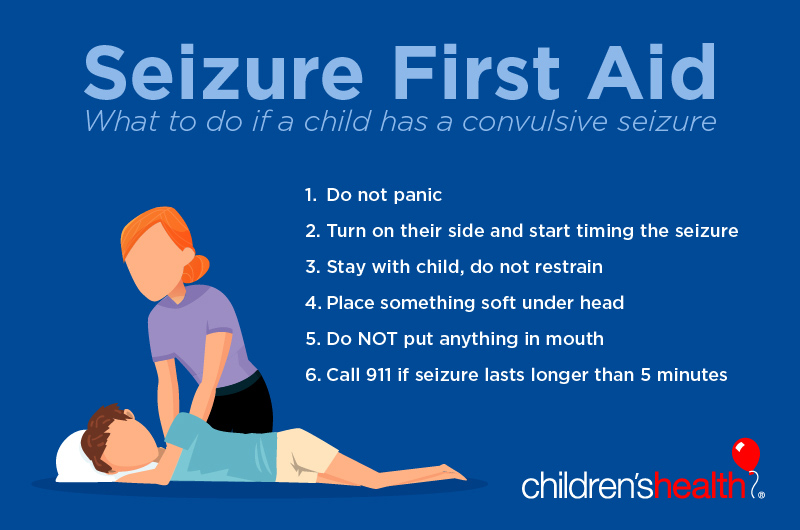
Seizures in children: Signs to look for and what to do - Children's Health
Seizure Precaution Implementation and Management Policy and Procedure
Preventative and Safety Measures for People with Epilepsy | Epilepsy Foundation
Seizure Precautions
Seizure Precautions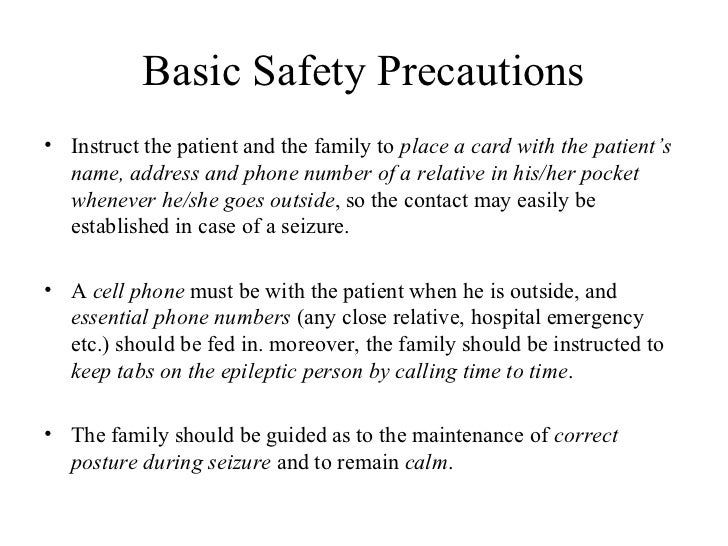
occupational therapy for epilepsy: an overview
Seizure Precaution Implementation and Management Policy and Procedure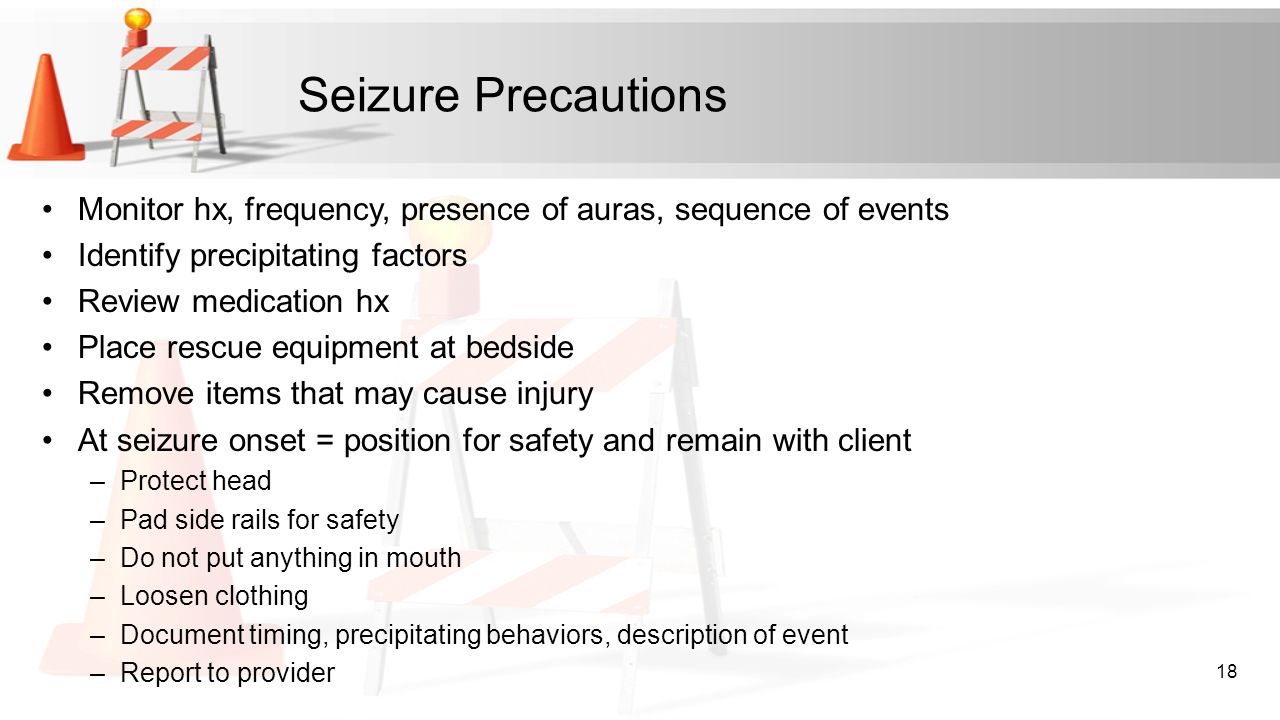
Safe and Effective Care: Safety and Infection Control - ppt video online download
Challenges in acute treatment and long-term management of epilepsy | Nursing Times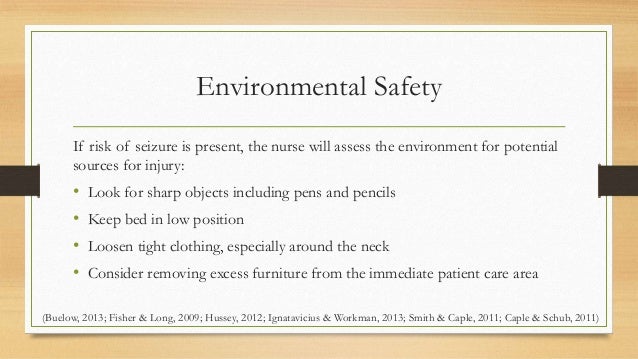
Sch seizure precautions
Seizure Precautions (Page 1) - Line.17QQ.com
Seizures NCLEX Review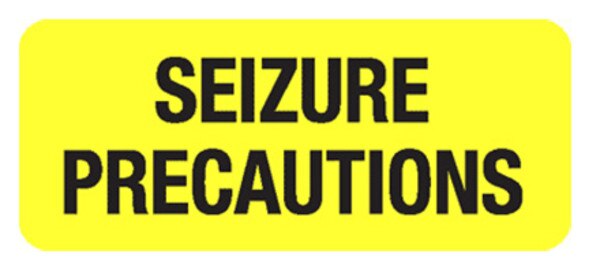
Chart Label - Seizure Precautions
NeurologyNeurology Elisa A. Mancuso, RNC-NIC, MS, FNS Professor of Nursing. - ppt download
Solved: A Nurse Is Implementing Seizure Precautions For A ... | Chegg.com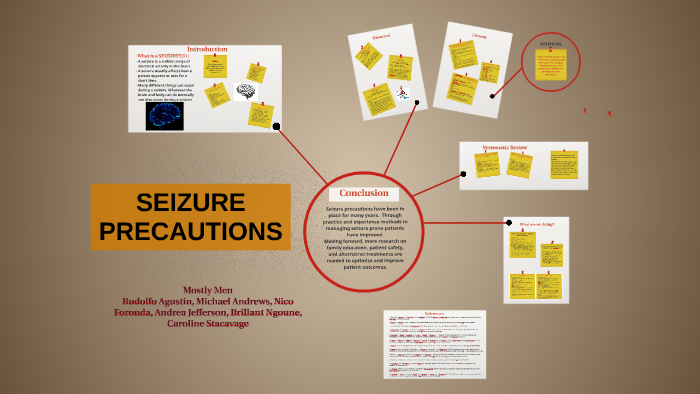
Seizure Precautions by Rudolfo Agustin
Seizure precautions nurse skill ATI template ACTIVE LEARNING TEMPLATES THERAPEUTIC PROCEDURE Nursing Skill STUDENT NAME SKILL NAME REVIEW MODULE CHAPTER ACTIVE - StuDocu
SEIZURE DISORDERS Joyce Estes RN, MSN - ppt download
Seizure Precautions Flashcards | Quizlet
Seizure precautions, a simple-to-read guide for how to help someone, keeping them safe if they are having a s… | Emergency nursing, Pediatric nursing, Nursing study
FREQENTLY ASKED QUESTIONS IN EPILEPSY - ppt download
ALT-Sezuire Precautions.pdf - ACTIVE LEARNING TEMPLATE Nursing Skill Jordan Hargis STUDENT NAME Seizure Precautions SKILL NAME REVIEW MODULE CHAPTER | Course Hero
Seizure Notes - NURSU 454 - StuDocu
Seizures NCLEX Review
First Aid for Seizures Procedure | Epilepsy Foundation
Seizure - WikEM
Seizures and Epilepsy in the Elderly - Practical Neurology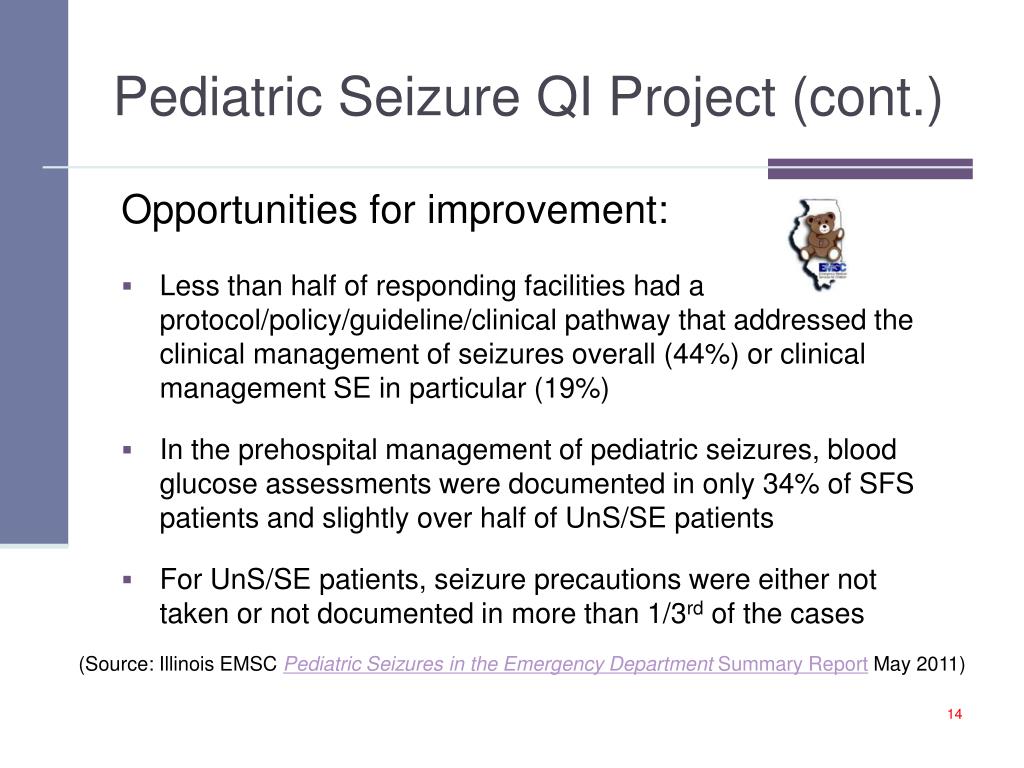
PPT - NURSE - Pediatric Seizures PowerPoint Presentation, free download - ID:650979
Gale Academic OneFile - Document - Seizure precautions for pediatric bedside nurses
Seizure Precautions (Page 1) - Line.17QQ.com
66 Seizure Precautions | Nurse Key
































Posting Komentar untuk "what are seizure precautions"